Testing Certification Requirements
The primary purpose for battery certification is to meet the demands of air shipment, and to comply with the international air parcel safety requirements.

1. UN 38.3 Testing Report
UN 38.3 refers to the lithium ion battery testing in section 38.3 of Manual of Tests and Criteria, compiled by United Nations Committee of Experts on the Transport of Dangerous Goods, which requires that all transportation of lithium ion batteries products or equipment containing lithium ion batteries must first complete the altitude simulation test, high low temperature cycling test, and vibratory test, blow test, 55℃ external short circuit, and impact test, overcharge test, and forced-discharge test, in order to guarantee the air transport security.
1) UN 38.3 Report certifying process
a. Firstly registration on Shanghai Research Institute of Chemical Industry Testing Center (SRICI) website, www.ghs.cn.
b. Send the consignation order number, 25 batteries, and 25 cells samples to the Research Institute of Chemical Industry.
c. Report will be issued in 30 working days after samples received.
2) UN 38.3 Test Report sample
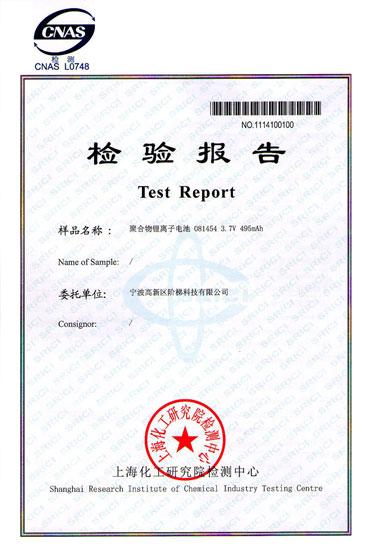
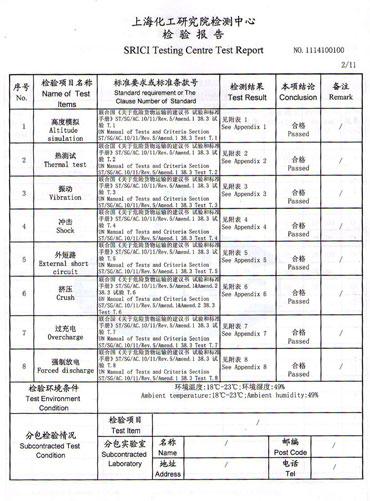
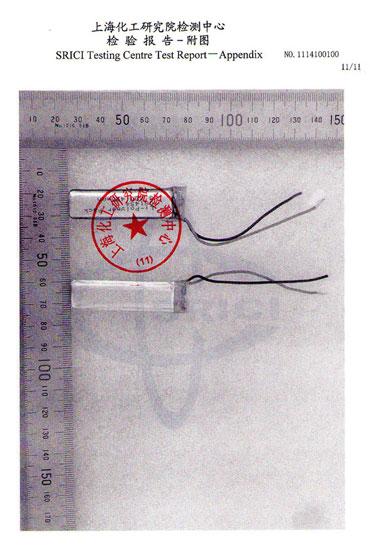
2. Identification and Classification Report for Air Transport of Goods
After the battery UN 38.3 report issued, an air identification report for dangerous goods transport needs to be made, which identifies the battery transport environment, (such as what forms of batteries are placed in products, or how products are packaged, and etc.)
1) Requirements for air testing report process and samples
a. Send a whole set of product and battery samples to the Research Institute of Chemical Industry, attaching product package picture, which includes single packaging and carton packaging design drawings.
b. Report will be issued in 3 working days after samples received.
c. Afterwards all shipments and packages must follow the identified form to be delivered (The number, packages and layout of each carton, and the assembled style of products must be the same); if there is any change of them, a new air identification report must be made.
Lithium Ion Battery Packaging Requirements
Lithium ion battery should be placed in solid package, unless installed in device, packaging should be able to prevent short circuits, and in one package it must be prevented to contact with the conductive material that can lead to short circuits.
1. Lithium Ion Battery Box Packaging Requirements
1) Lithium ion battery operation label
Lithium ion battery operation label must be pasted (there is no need to paste the operation label on packages if batteries are installed in devices, and there are less than 4 battery cells or 2 batteries in each device.)
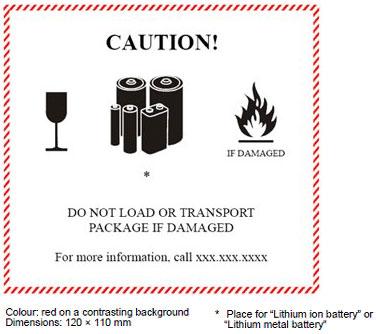
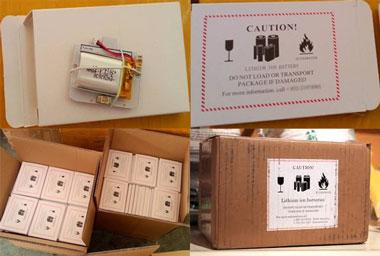
2) Together along transport document (e.g. MSDS)
If there is an operation label on box, it must come together with a document, this document can explain: there are lithium ion cells or batteries in package; it must be carefully operated; risk of flammability if broken; if the package is damaged, specific procedure must be followed, and to check and repack if necessary; and contact number for more information.
a. Material Safety Data Sheet(MSDS) once was a nine-section chemical safety document detailing the toxicity, use, storage, handling and emergency procedures of hazardous substances. Under the new GHS, Globally Harmonized System, the name has been changed from MSDS and simplified to SDS, Safety Data Sheet.
3) 1.2m Drop Test for package contains lithium cells or batteries
1.2m drop test for different surfaces and sides (individual transport or batteries and battery cells transported with devices need to be tested. Testing location: surface, edges and angles). Criteria for passing the 1.2 m drop test: Each package must be capable of withstanding the test without:
a. Damage or leakage to cells or batteries contained therein.
b. Shifting of the contents so as to allow battery to battery (or cell to cell) contact or short-circuit.
c. Release of contents.
4) Other
a. Battery package transported with devices: the maximum number of batteries inside each package is the minimum number that support enough power for equipment and two backup batteries.
b. If batteries are installed in equipment during transport, there must be effective measures to prevent accidental activation of equipment.
Posted by Candy Xu

Candy has helped numerous startups and makers get their hardware across turbulent seas of the market into their customers' hands. Having studied engineering, she's all round equipped to solve problems in all aspects of our services.
